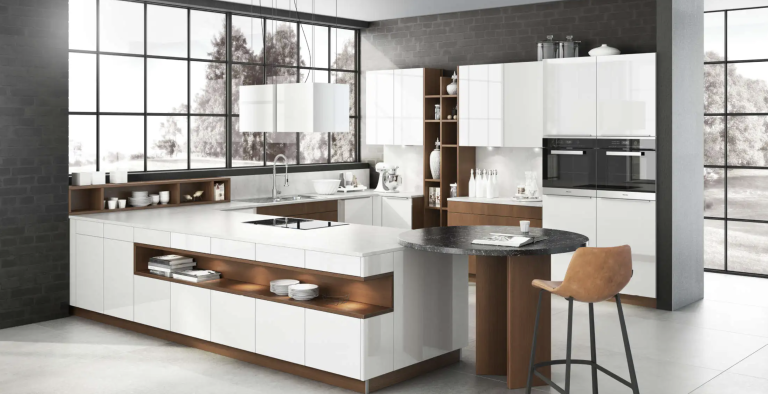European-style cabinets, also known as frameless cabinets, are a popular option for modern kitchens due to their minimalist design and efficient use of space. These cabinets originated in Europe and are defined by their clean lines, smooth surfaces, and lack of visible frames. In this article, we’ll break down the design philosophy behind European style cabinets, explain their construction techniques, and compare them to other popular cabinet styles.
Design Philosophy Behind European-Style Cabinets
The design philosophy of European style cabinets is rooted in modernism and minimalism. These cabinets prioritize simplicity, with an emphasis on smooth surfaces and the elimination of excessive details. This leads to a clean and sophisticated look, which is perfect for contemporary kitchens.
Key elements of this design philosophy include:
- Minimalism: These cabinets focus on clean lines and unadorned surfaces, with little to no ornamentation. The result is a sleek and modern aesthetic.
- Seamless Integration: European cabinets blend effortlessly with the kitchen’s architecture. Their frameless design allows for a more cohesive, uninterrupted flow in the kitchen.
- Efficient Use of Space: Without a face frame, European cabinets offer more usable space inside, making them ideal for smaller kitchens or those seeking to maximize storage.
- Flat and Smooth Surfaces: Cabinet doors are often flat, enhancing the streamlined look, and are available in a variety of finishes such as high-gloss, laminates, or wood veneers.
- Handle-Free Designs: Many European cabinets use push-to-open mechanisms or recessed handles, which reinforces the minimalist aesthetic.
Construction Techniques of European-Style Cabinets
What sets European-style cabinets apart is their frameless construction and advanced manufacturing techniques. These cabinets are built for durability and functionality, without compromising on aesthetic appeal.
Some notable construction techniques include:
- Frameless Construction: The defining feature of European cabinets is their lack of a face frame. The doors are attached directly to the cabinet box, creating a full-overlay look that maximizes interior space.
- High-Quality Materials: European cabinets are often made from materials like MDF, particleboard, or plywood, with finishes ranging from wood veneers to high-gloss laminates.
- Precision Hardware: Concealed hinges and soft-close mechanisms are standard in European cabinets, offering smooth operation and adding to the sleek design.
- Customizable Options: Many European cabinet brands offer a range of customization options, allowing homeowners to choose specific finishes, materials, and internal storage solutions tailored to their needs.
Comparison with Other Cabinet Styles
When comparing European style cabinets with other cabinet styles, there are a few key differences to highlight, particularly between European, traditional American, and Shaker styles.
- Framed vs. Frameless Construction:
Traditional American cabinets often have a face frame that adds structure and visual definition, whereas European cabinets are frameless. This frameless design allows for more interior storage space and contributes to the sleek, modern appearance of European cabinets. - Aesthetic Appeal:
European cabinets are known for their minimalism and clean lines, making them perfect for modern kitchens. In contrast, traditional cabinets tend to have more decorative elements such as raised panels and crown moldings, which are more suited to classic or rustic kitchen designs. - Hardware and Accessories:
European cabinets often feature handle-less designs or push-to-open mechanisms, further emphasizing their minimalist aesthetic. Traditional cabinets typically use visible knobs or pulls, adding to their more ornate design. - Cost and Installation:
European cabinets are generally more expensive than traditional cabinets, primarily due to the precision manufacturing and higher quality materials used. Their installation can also be more complex, as frameless cabinets require precise alignment for a flush look. - Customization:
European-style cabinets offer extensive customization options, from various finishes to built-in storage solutions like pull-out trays and organizers. While traditional cabinets can also be customized, they tend to offer fewer options when it comes to modern design elements and space-saving features.
Conclusion
European-style cabinets offer a modern, sleek alternative to traditional cabinetry, focusing on minimalism, functionality, and seamless design. Their frameless construction maximizes storage space, and their smooth surfaces and handle-free designs give kitchens a clean, streamlined look. While they may be more expensive and require precise installation, European-style cabinets are an excellent choice for homeowners seeking a contemporary kitchen design that balances aesthetics and function.














